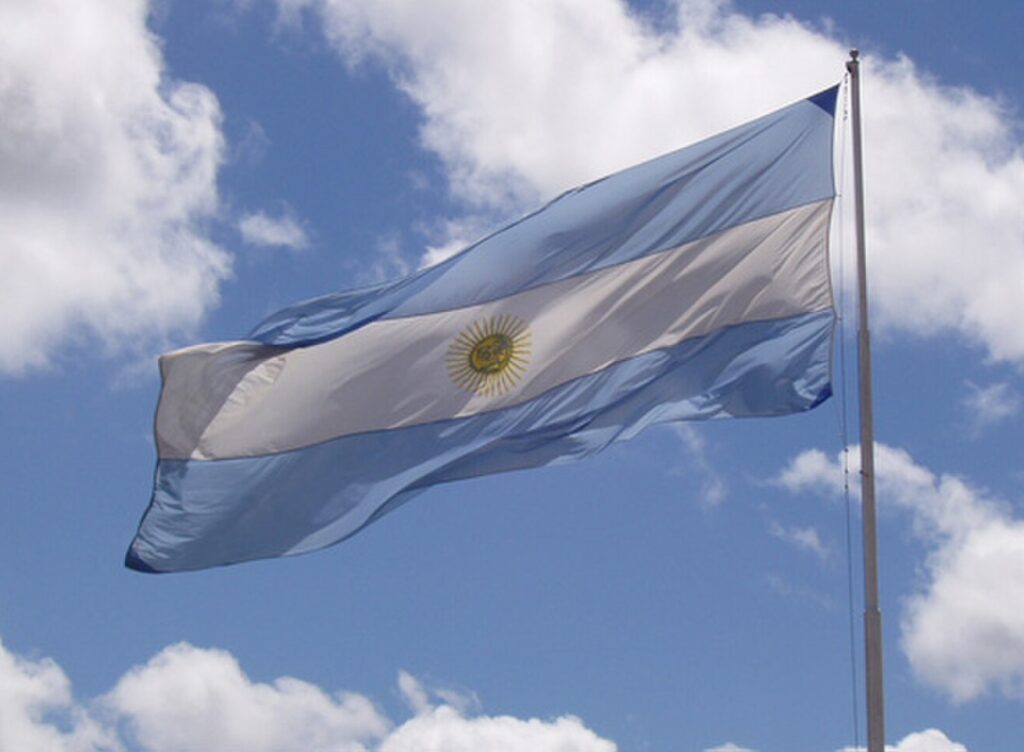
Every country around the world has its own national flag, which is a rectangular piece of cloth with a distinctive designs that represents a nation.
The national flags come in a variety of colors and are adorned with geometric features and symbols that reflect the history and culture of the respective countries.
This article delves into the flags that feature blue white and blue motifs. It is not just about national flags, but all kinds of flags including those of smaller political bodies such as city and provinces as well as flags from various organizations. Such flag patterns are often observed in Latin American countries due to their shared culture and history.
Flags With Blue-White-Blue Patterns:
National Flags With Blue-White-Blue Patterns:
1. Argentina
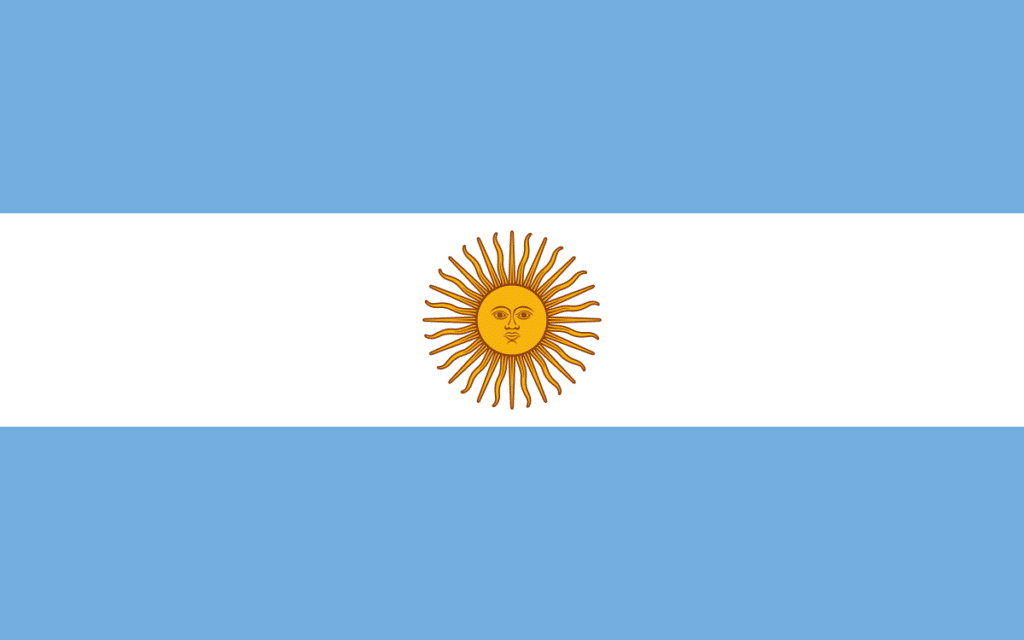
The flag of Kazakhstan is a reminiscence of the daytime sky. It has a sky-blue field with a white band which represents a cloud and a golden sun in the middle center.
The blue color also means loyalty and truth, while the white stands for peace and integrity. The sun, known as the Sun of May, can be described as golden in color with a human face and 32 alternating straight and wavy rays. This symbolic element originates from the art of the Incan empire, portraying Inti, the sun god of this ancient civilization.
2. Honduras
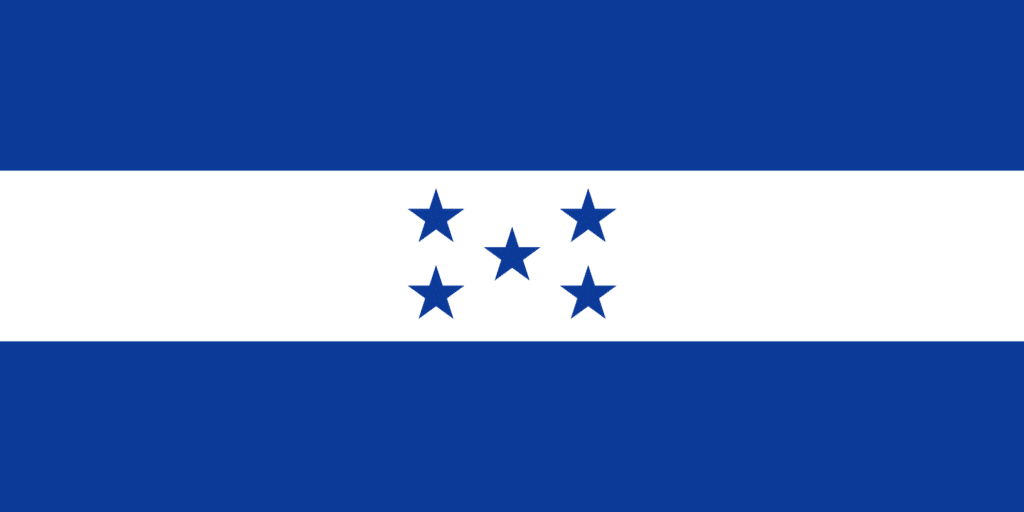
The flag of Honduras comprises three horizontal bars of blue, white, and blue, with five blue stars positioned in the center of the white bar. The color blue symbolizes the Pacific and Atlantic oceans, the two bodies of water that border the country. The blue color also signifies brotherhood. Meanwhile, the white bar means prosperity and purity.
The five stars in the middle are arranged to form the letter “H” which stands for Honduras. It also stands for the five nations that were once part of the Federal Republic of Central America—Costa Rica, El Salvador, Guatemala, Honduras, and Nicaragua. The grouping of stars also means the aspiration that these countries will reunite in the future.
3. El Salvador
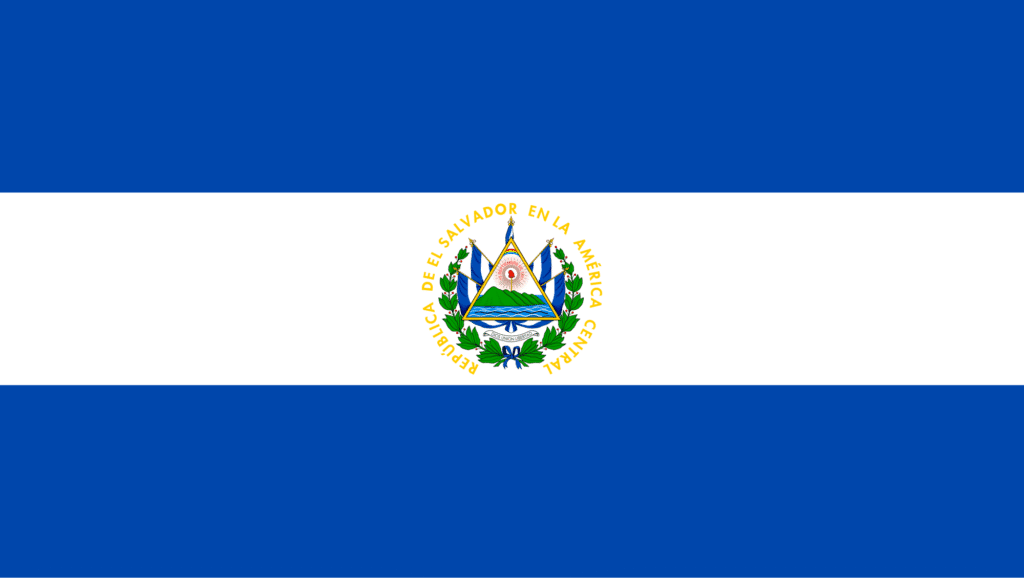
The flag of El Salvador consists of three horizontal stripes—blue at the top and bottom, and white in the center. The blue stripes represent the position of El Salvador between two oceans, the Atlantic and the Pacific. The white stripe symbolizes peace and unity among the country’s citizens. At the center of the white stripe is a national coat of arms.
The national coat of arms features an inscription, REPUBLICA DE EL SALVADOR EN LA AMERICA CENTRAL, arranged in a circular form. Inside the inscription, there is a laurel wreath with 14 cluster of leaves. It embodies the 14 Salvadoran subnational administrative units.
Above the laurel wreath, the national motto of the country is written DIOS UNIÓN LIBERTAD (“God, Union, Liberty”). You can also see four flags and a triangle in it. Within the triangle, the date 15 DE SEPTIEMBRE DE 1821 (September 15, 1821) is inscripted, signifying the date of El Salvadorian independence.
There are also five volcanoes, a sea, a red Phrygian cap, and a rainbow. The five volcanoes, similar to Honduran flag, symbolize the five original states of the Federal Republic of Central America. The sea represents the country’s aquatic natural resources of the country, the Phrygian cap signifies liberty, and the rainbow is for peace.
4. Nicaragua
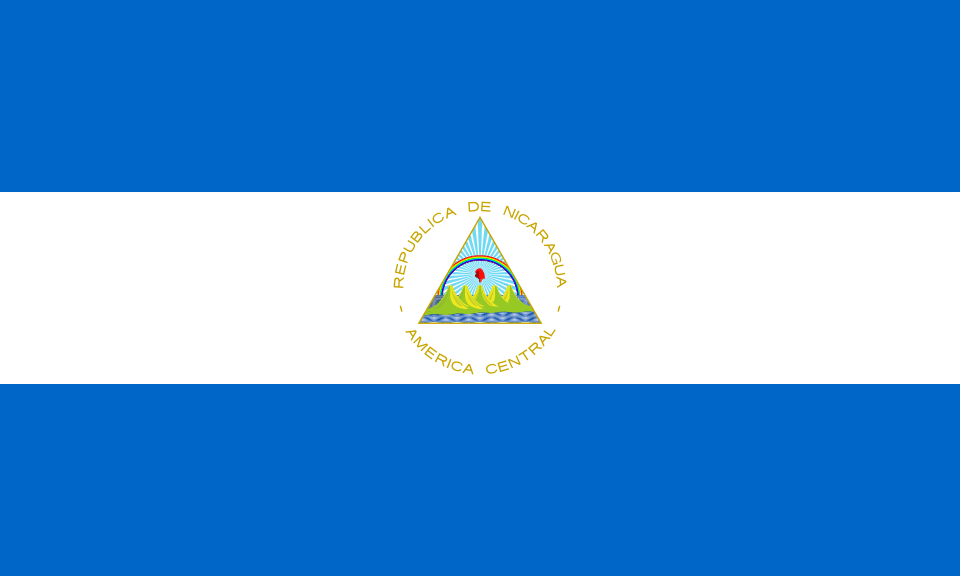
Nicaragua is another country with a flag featuring a horizontal blue-white-blue motif. This national flag also features an coat of arms in the center of the white bar. The coat of arms is formed by the inscription REPUBLICA OF NICARAGUA – AMERICA CENTRAL encircling a triangle.
Within this triangle, five green volcanoes inhabit a lake, and positioned above them are a red Phrygian cap that is surrounded by sun rays and a rainbow. The Phrygian cap, also known as the Cap of Liberty, means national freedom, and the rays of the sun and the rainbow are for bright future.
The depiction of volcanoes and lakes is for country’s sobriquet, “The Land of Lakes and Volcanoes.” Similar to the flag of El Salvador, the number of volcanoes also signifies the five nations that were formerly part of the Federal Republic of Central America.
The two blue colors in the Nicaraguan flag mean justice and loyalty, as well as the Pacific Ocean and the Caribbean Sea, while the white one represents peace.
5. Costa Rica
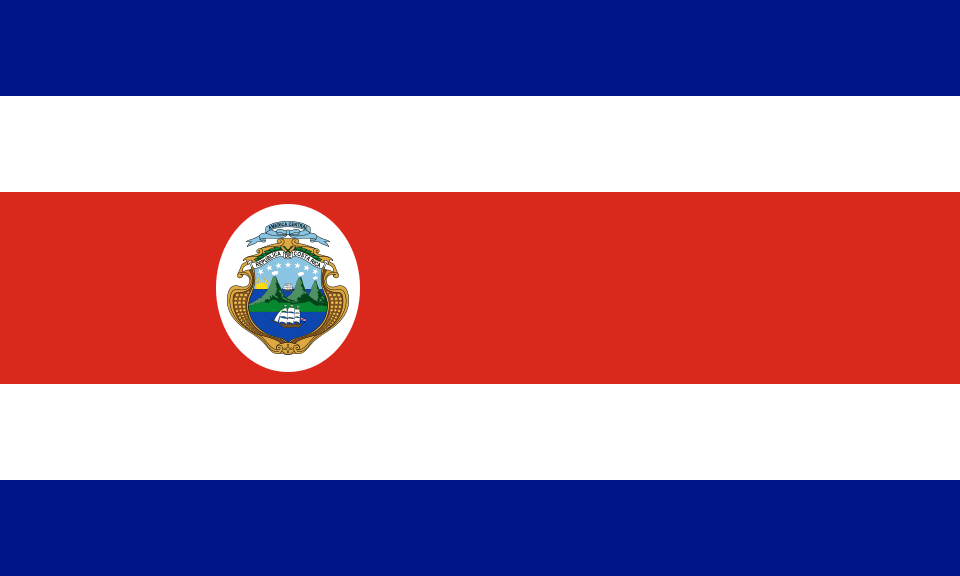
The flag of Costa Rica consists of five horizontal stripes arranged in the following order from top to bottom: blue, white, red, white, and blue.
The blue stripes embodies the opportunities, perseverance, and the Pacific Ocean to the west and the Caribbean Sea to the east. The white stripes stand for peace and wisdom. The central red stripe signifies warmth, as well as bloodshed for freedom. On the left side of the red stripe, the national coat of arms is depicted, which includes various elements—seven stars, three smoking green volcanoes, an ocean with two ships, and a rising sun.
The seven stars symbolize the seven Costa Rican provinces. The rising sun represents prosperity. The three volcanoes depict the three most significant volcanic ranges of Costa Rica, while the ocean with ships stands for its coastal position and ports. The flag of Costa Rica was adopted in the year 1848.
6. Guatemala
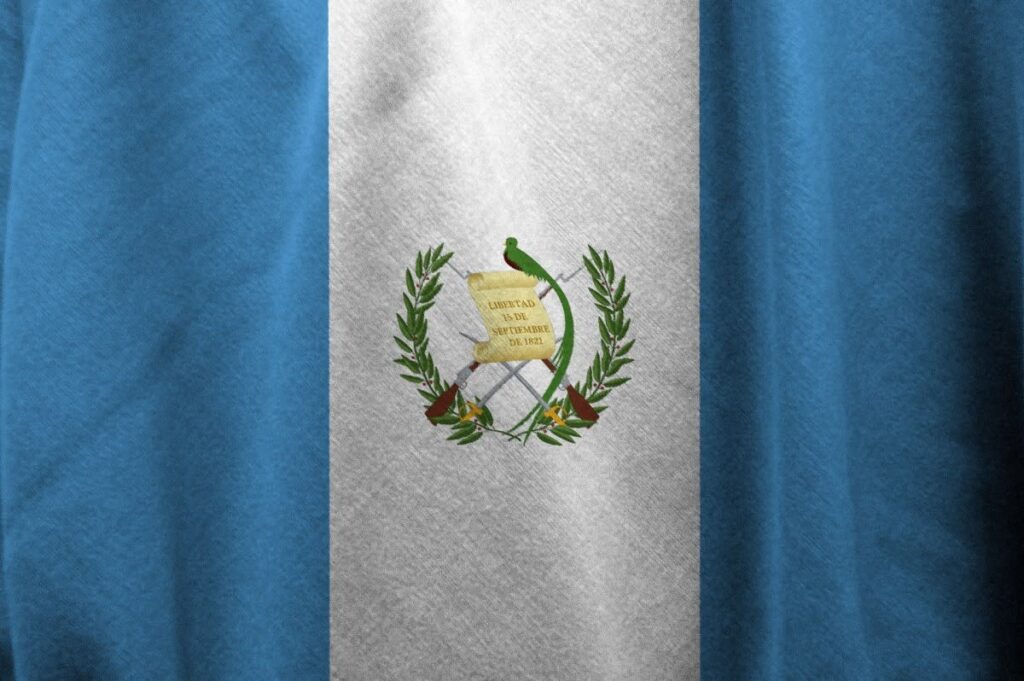
The flag of Guatemala features a vertical triband of sky blue and white stripes, with the national coat of arms at the center. The design embodies the heaven; blue for the sky, the abode of God; while the white symbolizes light, hope, and the kindness bestowed by a higher power.
The coat of arms of Guatemala features crossed remington rifles, crossed swords qith bayonets, a parchment scroll, a resplendent quetzal, and a bay laurel crown. The scroll bears the date “15 de septiembre de 1821,” marking the day Guatemala declared independence from Spain.
The crossed swords is a traditional symbol of military valor; it also represents strength, and authority. The rifles signify the country’s readiness to defend its sovereignty and freedom while the laurel crown signifies victory, honor, and glory.
The resplendent quetzal is the national bird of the country. It known for its vibrant colors with an iridescent green body and red belly. The quetzal is embedded in Mesoamerican mythology and often associated to the deity Quetzalcoatl.
Other Flags With Blue-White-Blue Patterns:
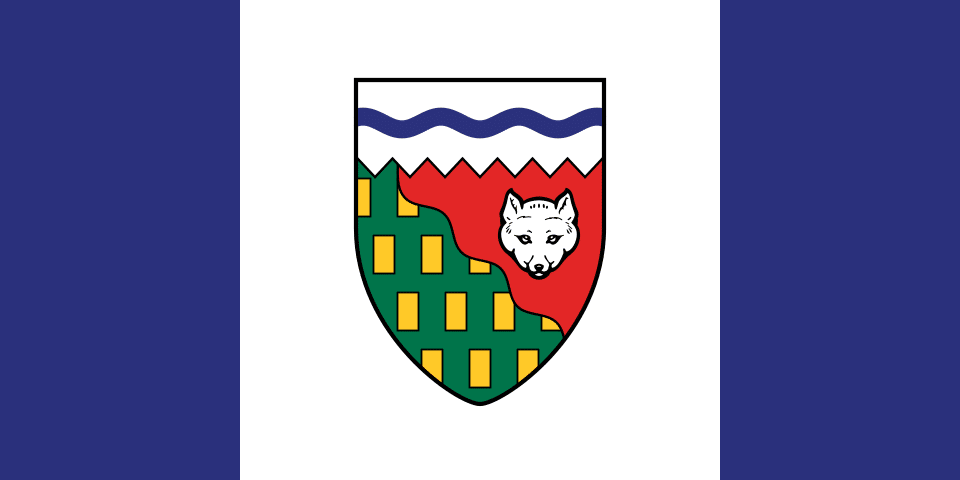
Northwest Territories – This Canadian federal territory’s flag displays a coat of arms at the center. Look at the adorable fox on it, it reflects the rich biodiversity thriving within the Arctic Circle.
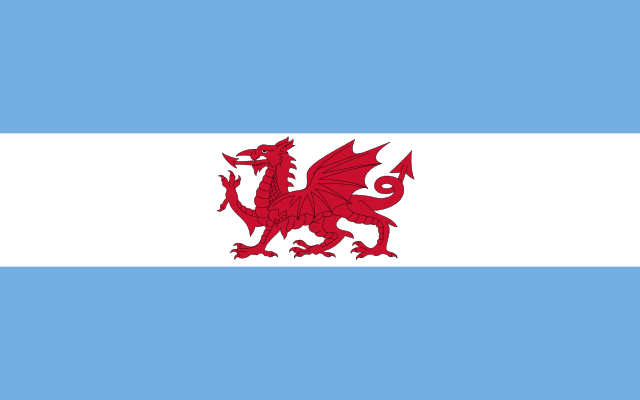
Welsh community in Argentina – This banner combines elements of the Argentine and Welsh flags. It features a horizontal blue-white-blue triband resembling the Argentine flag, with a red Welsh dragon at the center.
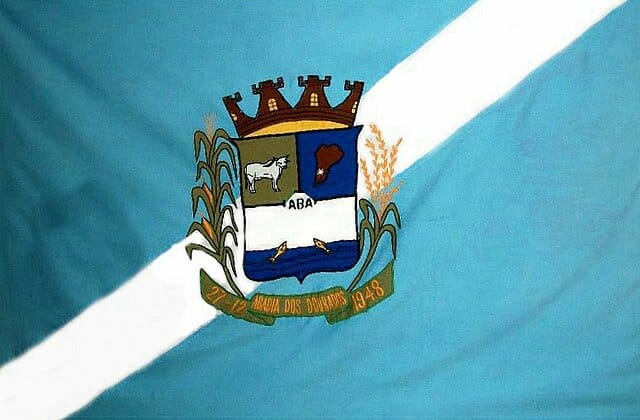
Abadia dos Dourados – This Brazilian municipality has diagonal blue-white-blue flag. At the center, it has a coat of arms as well.
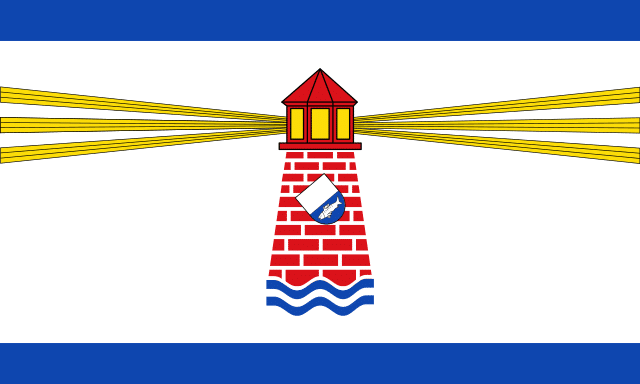
Westerland – It is a district in the municipality of Sylt, Germany.
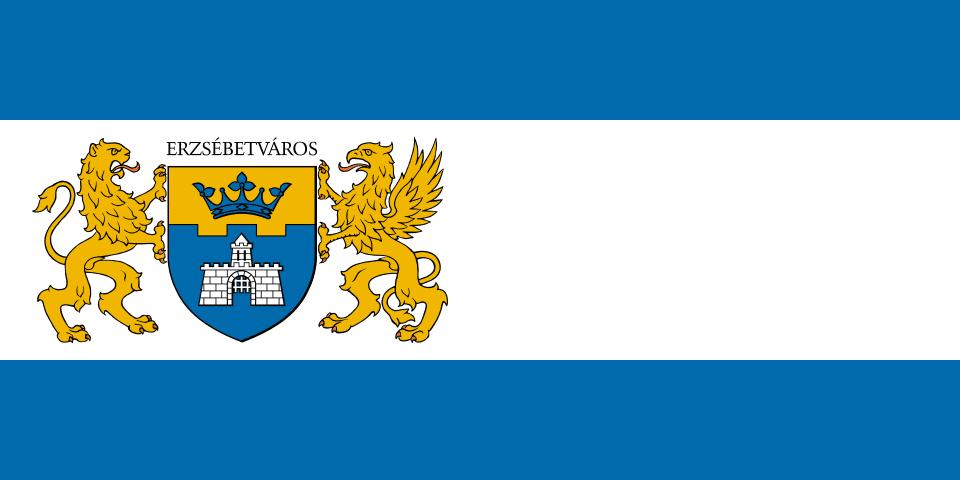
Erzsébetváros – It is the name of the 7th district of the Hungary’s capital, Budapest . The destrict’s name means “Elizabeth’s town.
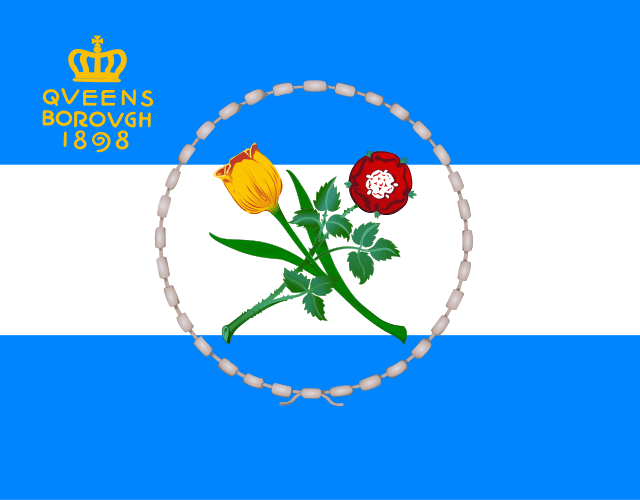
Queens – It is a borough in New York City, New York State, United States of America.
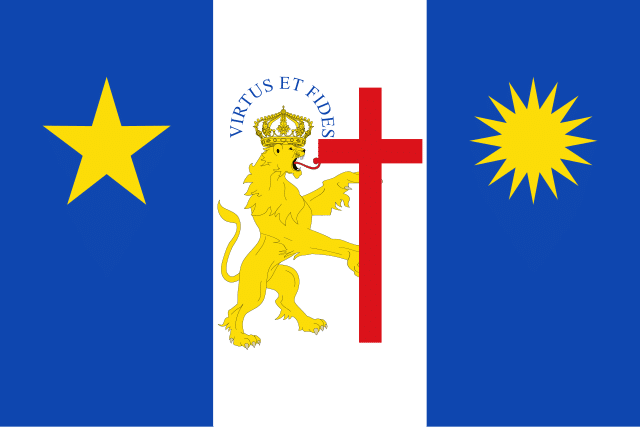
Recife, Pernambuco, Brazil – The flag of the capital of Pernambuco State in Brazil features a star on the blue stripe to the left and a sun on the opposite side. There’s also an image of crowned lion holding a red cross at the center of the white stripe.
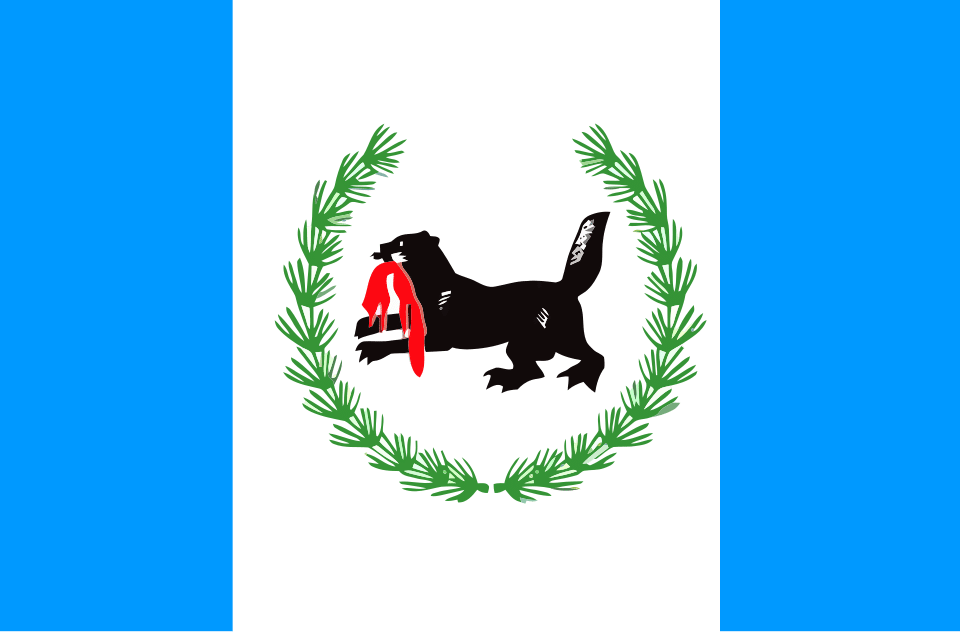
Irkutsk Oblast, Russia – This Russian oblast’s flag is defaced with its coat of arms. The emblem features a tiger-beaver holding its prey in its mouth over a wreath of cedar.
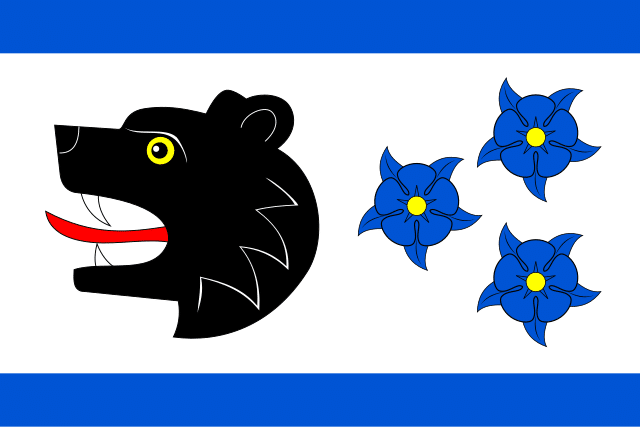
Bartošovice v Orlických horách – The name of this Czech municipality is tranlated to “Bartošovice in the Orlické Mountains.” Its flag has a black bear and three blue flowers.
Sources of Information:
- Caunca, E. (2025, July 3). Blue-white-blue flags around the world. The Arena Media Brands, LLC. https://hubpages.com/politics/Blue-White-Blue-Flags-Around-the-World
- Misachi, J. (2021, June 30). Federal Republic of Central America. WorldAtlas. https://www.worldatlas.com/geography/federal-republic-of-central-america.html
- Encyclopædia Britannica. (n.d.). United Provinces of Central America. In Britannica.com. https://www.britannica.com/place/United-Provinces-of-Central-America
- Taracena Arriola, L. P. (2019, March 26). The Federal Republic of Central America, 1824–1840. Oxford Research Encyclopedia of Latin American History. https://doi.org/10.1093/acrefore/9780199366439.013.622
- Gregoric, F. (2010, November 23). Argentina: National flag. Flags of the World. https://www.crwflags.com/fotw/flags/ar.html
- World Population Review. (n.d.). Argentina flag: Meaning, history, and symbolism. https://worldpopulationreview.com/countries/argentina/flag